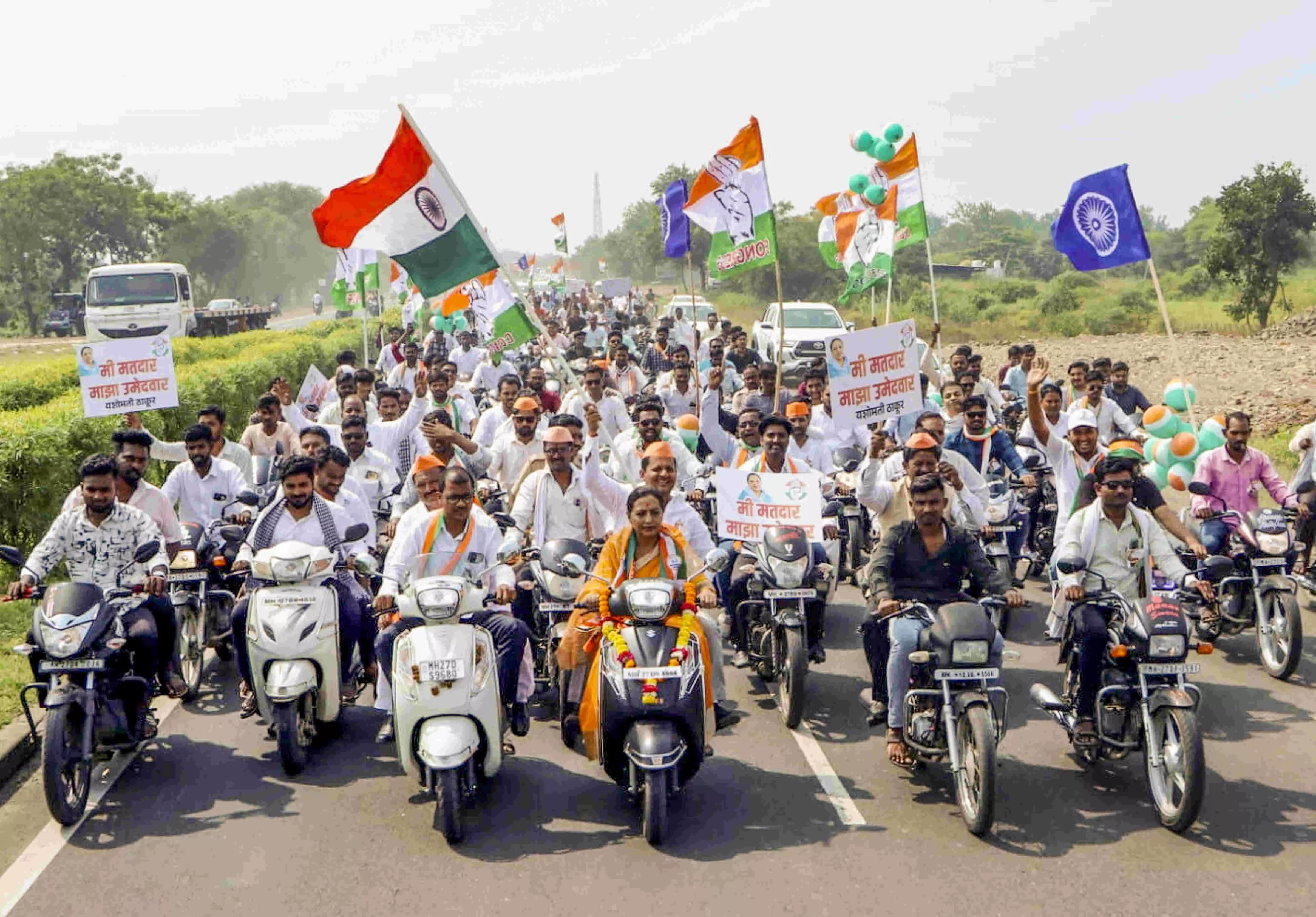No easy contests!

The year 2024 has witnessed a series of crucial elections—both in India and abroad—including the much awaited General Elections. In such a decorated cycle of elections, democracy comes alive in its bright colours. As the year approaches its end, two Indian states—Maharashtra and Jharkhand—are gearing up for yet another festival of democracy in what is literally called a festive season.
Maharashtra, which is renowned as India’s economic hub, holds a prominent role in national politics, thanks to its size and political influence. With the Bharatiya Janata Party (BJP) contesting 148 seats out of 288, it’s clear the party is keen to cement its dominance alongside Chief Minister Eknath Shinde’s Shiv Sena faction and Ajit Pawar’s Nationalist Congress Party (NCP) in the ruling Mahayuti alliance. The opposition coalition, Maha Vikas Aghadi (MVA), comprising the Congress, Uddhav Thackeray-led Shiv Sena (UBT), and the Sharad Pawar faction of the NCP, will need to rely on a greased up campaign to retain relevance against a well-resourced BJP-led front. The scale of candidature in Maharashtra—nearly 8,000—speaks volumes about the highly competitive election environment in the state. This also mirrors the fragmentation of power in Maharashtra, where once-unified entities such as the Shiv Sena and NCP are now ready to enter the fray with their split versions, for the first time in assembly elections. The ideological chasm between the MVA and the Mahayuti is further deepened by the BJP's consistent push for nationalism and Hindu identity—a strategy it has capitalised upon in previous elections as well. For the MVA, the challenges are on multiple fronts—sustaining their coalition unity, connecting with subaltern groups who might be deserting the BJP, and outplaying the saffron party’s narrative of polarisation with a suitable counter-narrative. Furthermore, the upcoming Maharashtra elections will serve as a significant barometer of voter sentiments on issues like caste reservation and regional identity. Following caste-based mobilisations in the state, the MVA aims, apparently, to draw in Dalit and Other Backward Class communities, which could provide it a competitive edge. But with internal bickering over seat-sharing, the opposition coalition must avoid diluting its message to maximise appeal across Maharashtra's complex socio-political landscape.
Jharkhand, at the same time, presents an entirely different set of dynamics with its resource-rich land and significant tribal population. Here, the two-phase election is appearing to be a high-stakes affair, with the ruling Jharkhand Mukti Morcha (JMM)-led INDIA bloc up against the BJP-led National Democratic Alliance (NDA). Chief Minister Hemant Soren’s leadership has no doubt faced challenges, but it has also garnered and retained considerable tribal support. His arrest in connection with alleged corruption—perceived by many tribal groups as politically motivated—has given him a surge in popularity on account of sympathy, especially among the tribal electorate. Jharkhand’s electorate is sharply divided along tribal and non-tribal lines, with Adivasis forming approximately 26 per cent of the population. The BJP, which is banking on its alliance with the All Jharkhand Students Union (AJSU), seeks to consolidate non-tribal votes while also chipping away at JMM’s tribal base by fielding key defectors. The BJP, of course, is also not shying away from invoking its beloved agenda of communal polarisation in order to distract voters from socio-economic issues. On the policy front, the Soren government has focused on certain welfare programmes. Whether such schemes will translate to votes is uncertain, as the opposition has campaigned heavily on concerns about alleged mismanagement and corruption. The BJP, drawing on its organisational strength, has launched a well-resourced campaign aimed at undercutting the incumbent government’s influence. For the INDIA bloc to stand a chance, it must sustain tribal support while broadening its appeal across socio-economic strata through an effective and resonant counter-campaign.
It won’t be wrong to say that the BJP has dominated India’s electoral landscape over the past 10 years. However, several elections this year, including the General Elections, have indicated that its popularity has reached maturity, beyond which it may start waning. This has led to a very competitive and interesting phase in Indian politics. Elections are springing up with unexpected results. That is the beauty of democracy, the rule of people. Maharashtra and Jharkhand will certainly stick to the benchmark.



